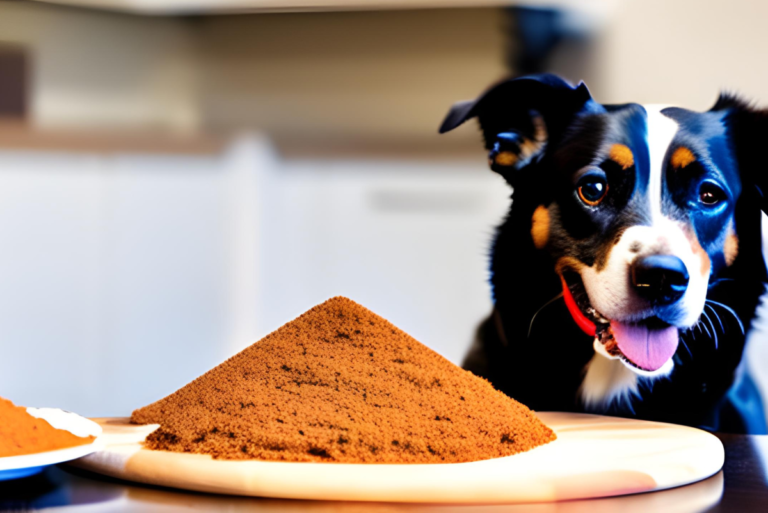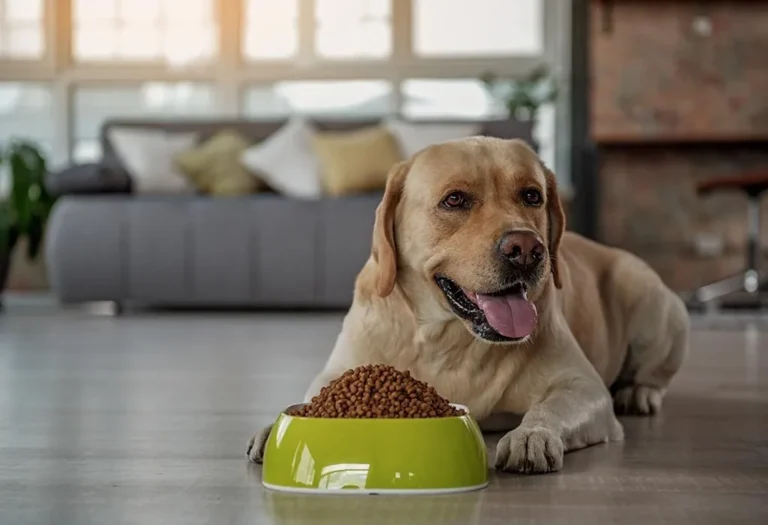Top Dog Food Recipes for Your Labrador

Feeding your Labrador a nutritious and delicious diet is essential for their health and happiness. Homemade dog food allows you to take control of what goes into your dog’s meals, ensuring they get the freshest and most beneficial ingredients. In this guide, we’ll explore the benefits of homemade dog food and share top recipes that are perfect for your Labrador.
1.Why Choose Homemade Dog Food for Your Labrador?
Homemade dog food offers numerous benefits for Labradors, including:
- Control Over Ingredients: By making your dog’s food at home, you can select high-quality, natural ingredients and avoid fillers, artificial additives, and preservatives often found in commercial dog foods.
- Customization for Dietary Needs: Homemade recipes allow you to tailor meals to meet your Labrador’s specific dietary requirements, whether they have allergies, sensitivities, or special nutritional needs.
- Improved Health: Fresh, homemade meals can improve your Labrador’s coat condition, support healthy digestion, and boost overall energy levels.
2.Key Nutrients for a Well-Rounded Homemade Dog Diet
For a well-rounded homemade diet for your Labrador, make sure to incorporate essential nutrients in the correct ratios.
- Protein: Vital for muscle maintenance and overall health. Sources include chicken, beef, turkey, and fish.
- Choose nutritious fats such as those found in fish oil and olive oil.
- 4o mini
- Carbohydrates:Incorporate ingredients like sweet potatoes and quinoa.
- Vitamins and Minerals: Essential for various bodily functions. Incorporate Add a mix of vegetables and fruits to provide a broad spectrum of vitamins and minerals.
- Fiber: Helps with digestion and can be provided through vegetables and grains like quinoa.
Including these nutrients in your homemade dog food will keep your Labrador healthy and thriving. It’s key to their overall well-being and vitality.
3.Delicious Homemade Dog Food Recipes for Your Labradors
A. Chicken and Vegetable Stew
Ingredients:
- 2 cups of chicken breast, diced
- 1 cup of carrots, chopped
- 1 cup of green beans, chopped
- 1/2 cup of peas
- 1/2 cup of sweet potatoes, diced
- 1/2 cup of low-sodium chicken broth
- 1 tablespoon of olive oil
Instructions:
- Cook Chicken: Heat the olive oil in a large pot over medium heat.Add the diced chicken and cook until it’s fully cooked and no longer pink.
- Add Vegetables: Add the carrots, green beans, peas, and sweet potatoes to the pot. Stir and cook for about 5 minutes.
- Simmer: Pour in the chicken broth, bring to a boil, then reduce heat and let it simmer for about 20 minutes or until the vegetables are tender.
- Cool and Serve: Allow the stew to cool before serving. Keep leftovers in the fridge for up to 5 days
Benefits: High in protein and vitamins, this recipe promotes healthy digestion and overall wellness.
B. Beef and Quinoa Mix
Ingredients:
- 1 pound of lean ground beef
- 1/2 cup of quinoa
- 1 cup of spinach, chopped
- 1/2 cup of carrots, diced
- 1/2 cup of peas
- 1 tablespoon of olive oil
Instructions:
- Cook Beef: In a large skillet, heat the olive oil over medium heat. Stir in the ground beef and cook until it’s fully browned.
- Cook the quinoa: While the beef is browning, rinse the quinoa with cold water.r. In a separate pot, cook the quinoa according to package instructions.
- Blend it well: Stir in the cooked quinoa until everything is mixed together. Let the mixture cool before serving..
- Mix Together: Stir in the cooked quinoa until everything is well combined. Allow the mixture to cool before serving.
Benefits:Benefits: This recipe offers protein and fiber to help maintain muscle and support healthy digestion.
C. Turkey and Pumpkin Delight
Ingredients:
- 1 pound of ground turkey
- 1 cup of canned pumpkin
- 1/2 cup of carrots, chopped
- 1/2 cup of green beans, chopped
- 1/4 cup of cranberries (optional)
- 1 tablespoon of olive oil
Instructions:
- Cook Turkey: Heat the olive oil in a large skillet over medium heat. Cook the ground turkey until it’s completely browned.
- Add Vegetables: Add the carrots and green beans to the skillet. Cook until the vegetables are tender.
- Mix in Pumpkin: Stir in the canned pumpkin and cranberries (if using). Cook for an additional 5 minutes.
- Cool and Servel et the mixture cool before serving. Store any leftovers in the fridge for up to 5 days
Benefits: Pumpkin aids digestion and supports skin and coat health.
D. Salmon and Sweet Potato Feast
Ingredients:
- 1 pound of salmon, skinless and boneless
- 1 cup of sweet potatoes, diced
- 1/2 cup of spinach, chopped
- 1/2 cup of carrots, diced
- 1 tablespoon of olive oil
Instructions:
- Cook Salmon: Preheat your oven to 350°F (175°C).
Put the salmon on a baking sheet and bake for 20 minutes or until cooked through. Once cooled, flake the salmon into small chunks. - Cook Sweet Potatoes: While the salmon is baking, steam or boil the sweet potatoes until tender.
- Combine Ingredients: In a large bowl, mix the flaked salmon, cooked sweet potatoes, spinach, and carrots. Stir until well combined.
- Cool and Serve: Allow the mixture to cool before serving. Store leftovers in the refrigerator for up to 5 days.
Benefits: Rich in omega-3 fatty acids, this recipe supports a healthy coat and skin.
E. Chicken and Rice Medley
Ingredients:
- 2 cups of chicken breast, diced
- 1 cup of brown rice
- 1 cup of carrots, chopped
- 1/2 cup of peas
- 1 tablespoon of olive oil
Instructions:
- Cook Chicken: Heat the olive oil in a large pot over medium heat. Add the chicken and cook until no longer pink.
- Cook Rice: In a separate pot, cook the brown rice according to package instructions.
- Add Vegetables:Add the chicken and cook until it’s fully cooked and no longer pink.
- Combine Ingredients: Stir in the cooked rice and mix well. Allow the mixture to cool before serving.
Benefits: A gentle recipe that is easy on the stomach and supports digestive health.
4.Tips for Preparing and Storing Homemade Dog Food
- Safe Preparation: Always use fresh, high-quality ingredients and ensure proper cooking temperatures to avoid contamination.
- Proper Storage: Store homemade dog food in airtight containers.Store leftovers in the fridge for up to 5 days, or freeze for longer storage.
- Portion Control: Measure your Labrador’s servings based on their dietary needs and adjust according to their activity level and health.
5.Transitioning Your Labrador to Homemade Dog Food
Gradual Transition: Slowly introduce homemade food by mixing it with your Labrador’s current food. Start with a small amount and gradually increase the proportion of homemade food over 7-10 days.Monitor Health: Watch for any changes in your Labrador’s stool, appetite, or energy levels. Adjust recipes as needed and consult your vet if you notice any issues
6.Common Questions About Homemade Dog Food
To ensure your homemade dog food is balanced, consult your vet to confirm it meets your Labrador’s nutritional needs. Use a mix of ingredients for a well-rounded diet.
You can use leftover ingredients from your own meals, but make sure they are dog-safe and free of harmful seasonings or additives. If your Labrador has allergies or special dietary needs, tailor the recipes to avoid those triggers. Customize recipes based on your Labrador’s specific needs and consult with your vet to create suitable meal plans.
Conclusion
Homemade dog food offers a wonderful way to provide your Labrador with nutritious, tailored meals made from fresh ingredients. By trying these easy recipes, you can ensure your furry friend enjoys a healthy, balanced diet that supports their well-being. .Always check with your vet to ensure your homemade meals are meeting all of your Labrador’s nutritional needs. Share your experiences and any questions you have about homemade dog food in the comments below!



